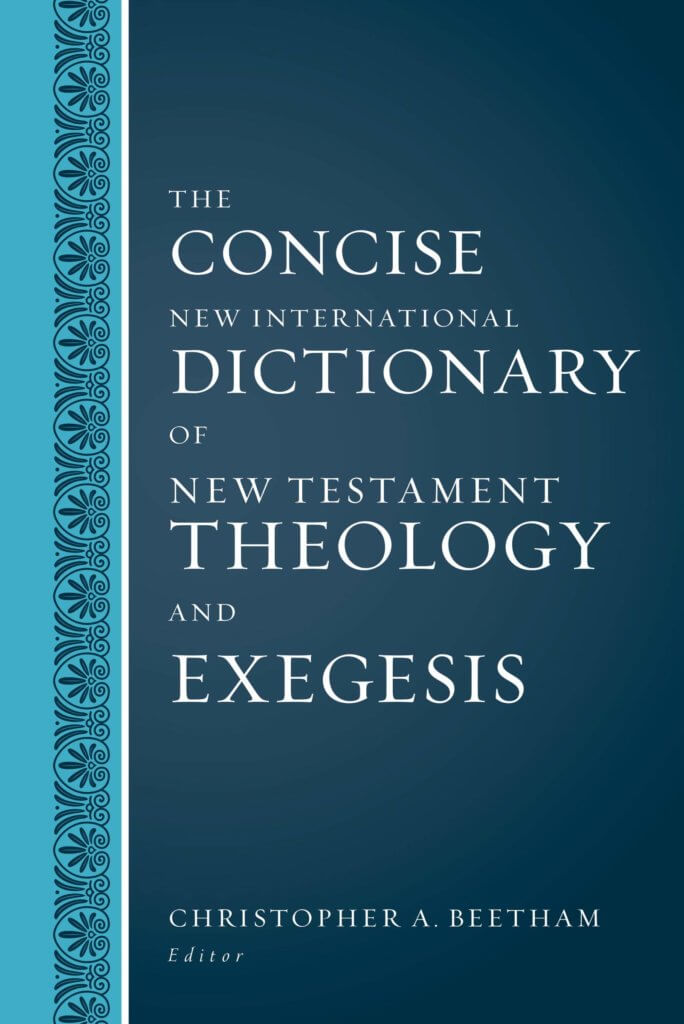Christopher A. Beetham, ed. The Concise New International Dictionary of New Testament Theology and Exegesis. Grand Rapids: Zondervan, 2021. 1,200 pages. $56.99 (Hardcover).

In The Concise New International Dictionary of New Testament Theology and Exegesis (CNIDNTTE) Christopher Beetham, senior editor of biblical languages, textbooks, and reference resources at Zondervan, has abridged Moises Silva’s revision of Colin Brown’s New International Dictionary of New Testament Theology and Exegesis. CNIDNTTE is a theological dictionary covering over 3,000 theologically significant Greek words in the New Testament. As a theological dictionary, it is both a linguistic resource providing semantic definitions of words, and an extralinguistic resource providing information about real-world concepts (xiii). Each article first discusses semantic definitions and considers conceptual information related to the word in ancient Greek literature, Jewish writings, and the New Testament. The dictionary is organized alphabetically, but, to aid readers unfamiliar with Greek, each word is identified with its “G” number. The G number is shorthand for a Greek word’s Goodrick-Kohlenberger number, which “assigns sequential numbers to all words used in the Greek New Testament in their alphabetical ordering” (viii). To further aid those unfamiliar with Greek, the words are spelled phonetically. Additionally, there is a table showing the conversion between the G number and Strong’s number so that readers who know the Strong’s number can look up the relevant word. Each Greek word is also assigned to several concept or semantic-domain categories, so readers can research broader concepts as well as specific words.
As an abridgment, CNIDNTTE seeks “to make the riches of NIDNTTE accessible to a wider audience” (vii). It, therefore, retains all the original articles in NIDNTTE but condenses them into one volume instead of five. Beetham focuses on information directly relevant to understanding words in the New Testament, so he removes most of the diachronic and etymologic information. In its synchronic focus, the CNIDNTTE is very similar to the EDNT (Exegetical Dictionary of the NT [Eerdmans]). He also removes all discussion of rabbinical sources because of the difficulty in determining their relevance to first-century thought. Extended discussion of competing interpretations and text-critical issues have also been removed, and readers are directed to critical commentaries for such information. Lastly, the bibliographies at the end of each article are significantly reduced.
Beetham has succeeded in preserving the most salient information from NIDNTTE to benefit preachers and students as they interpret the New Testament. The focus on synchronic meaning helps the reader focus on how a word is used by New Testament authors, and the removal of diachronic information protects readers from anachronistic fallacies. Moreover, the organization of words into concepts directs the reader to consider broader word usage and avoid atomistic, isolated exegesis. The concept categories also enable readers to further examine biblical concepts and become aware of related words and passages as they study a given word. The single-volume edition is also cost-effective, making it easier for students and pastors to afford this valuable resource.
Daniel Graham is a Ph.D. student at Midwestern Baptist Theological Seminary.



